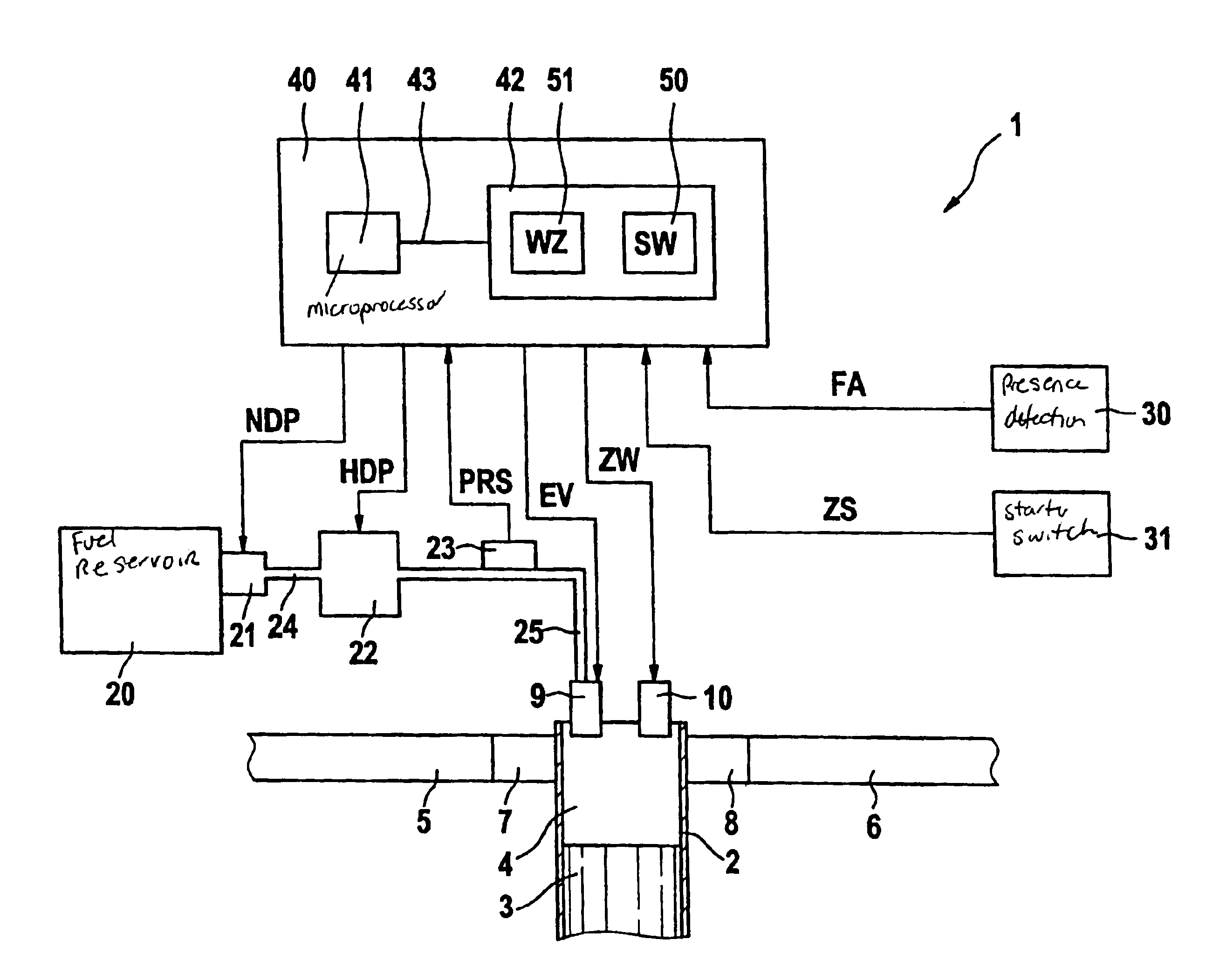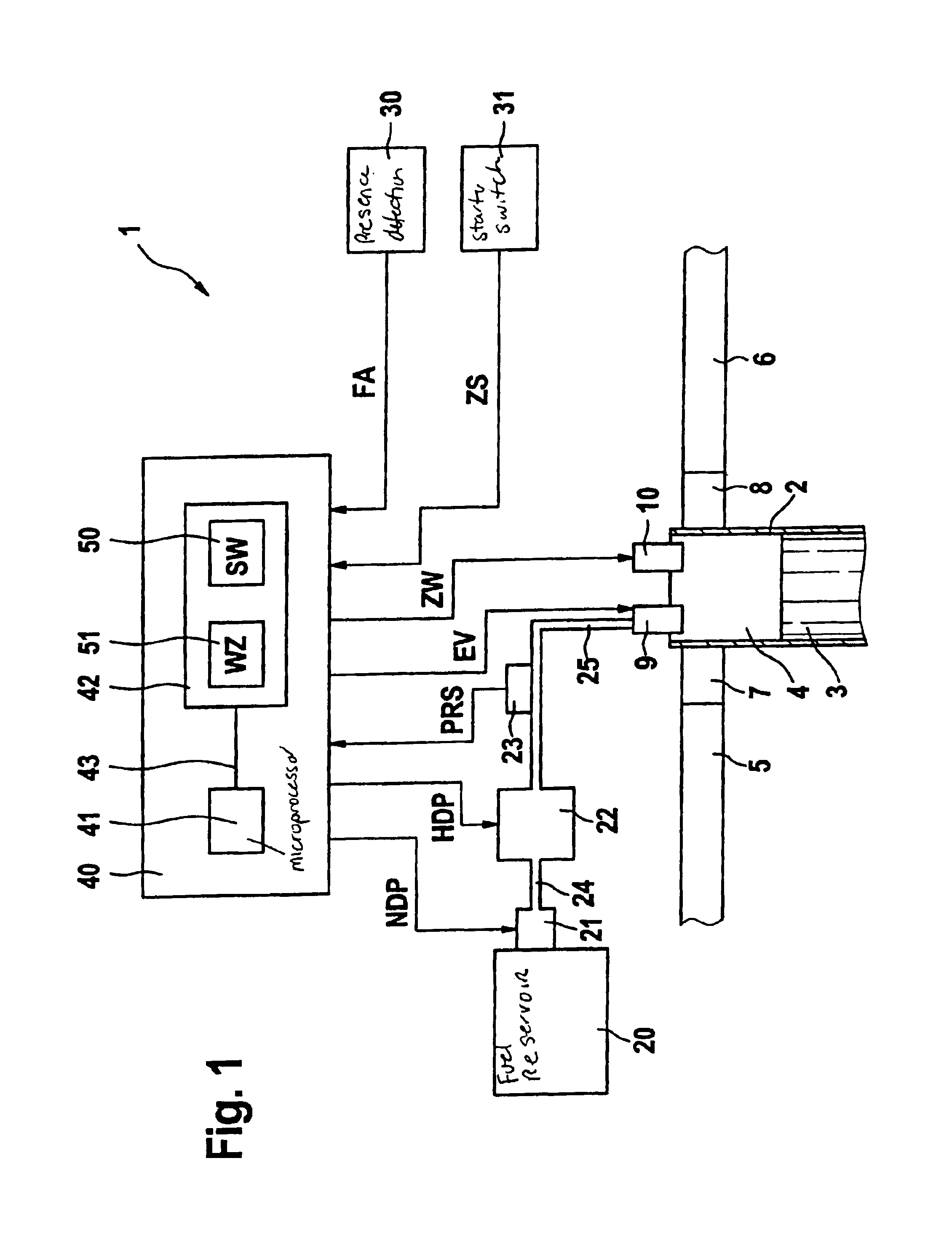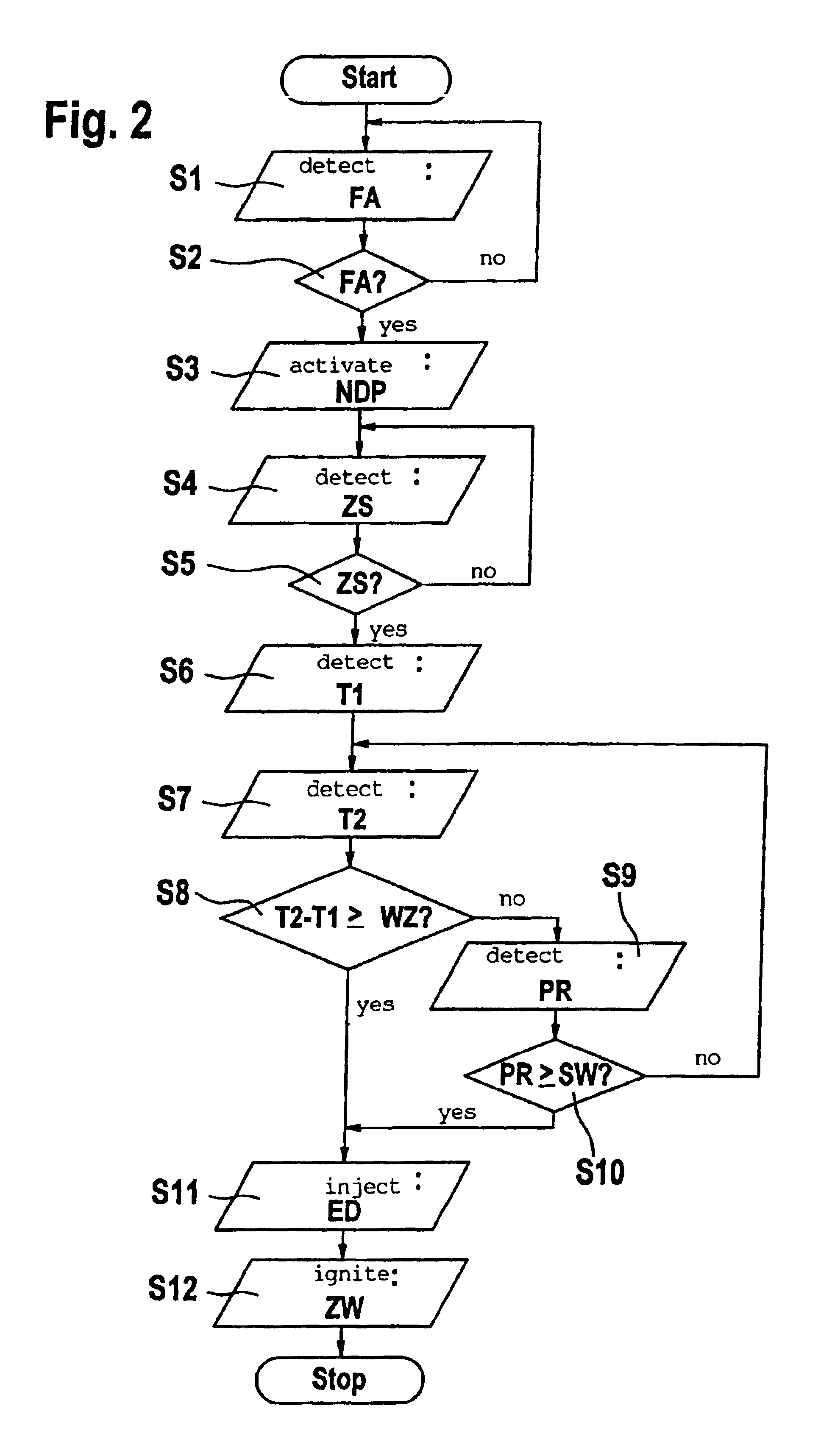Method for starting an internal combustion engine, particularly an internal combustion engine having direct fuel injection
a technology of internal combustion engine and fuel injection, which is applied in the direction of engine starters, electrical control, tractors, etc., can solve the problems of unfavorable mixture formation, low starting reliability, and low efficiency of electrically driven fuel presupply pumps, so as to increase the starting reliability, increase the starting pressure, and cost-effective
- Summary
- Abstract
- Description
- Claims
- Application Information
AI Technical Summary
Benefits of technology
Problems solved by technology
Method used
Image
Examples
Embodiment Construction
[0021]FIG. 1 shows an internal combustion engine 1 in which a piston 3 is arranged in a manner allowing it to move back and forth in a cylinder 2. Naturally, internal combustion engine 1 may also include a plurality of cylinders 2. Formed in cylinder 2 is a combustion chamber 4, to which an intake manifold 5 is connected via an intake valve 7, and an exhaust pipe 6 is connected via an exhaust valve 8. Also allocated to combustion chamber 4 are a fuel injector 9 controllable by a signal EV and a spark plug 10 controllable by a signal ZW.
[0022]Mounted at a fuel reservoir 20 is a fuel presupply pump 21 that is controllable via a signal NDP and is preferably electrically driven. It is connected via a fuel line 24 to a high-pressure pump 22 controllable via a signal HDP. A high-pressure accumulator 25 connects fuel injector 9 to high-pressure pump 22. Arranged in high-pressure accumulator 25 is a pressure sensor 23 that generates a signal PRS as a function of a pressure PR prevailing in ...
PUM
 Login to View More
Login to View More Abstract
Description
Claims
Application Information
 Login to View More
Login to View More - R&D
- Intellectual Property
- Life Sciences
- Materials
- Tech Scout
- Unparalleled Data Quality
- Higher Quality Content
- 60% Fewer Hallucinations
Browse by: Latest US Patents, China's latest patents, Technical Efficacy Thesaurus, Application Domain, Technology Topic, Popular Technical Reports.
© 2025 PatSnap. All rights reserved.Legal|Privacy policy|Modern Slavery Act Transparency Statement|Sitemap|About US| Contact US: help@patsnap.com



